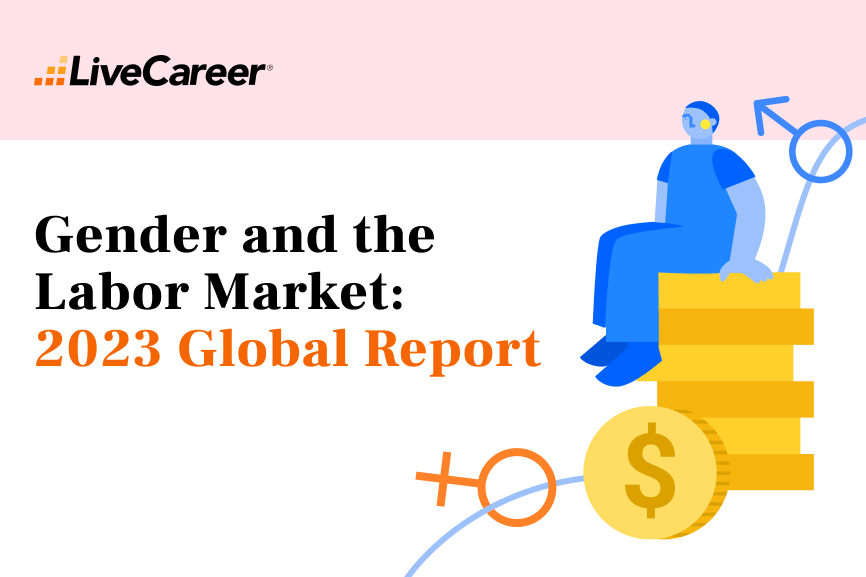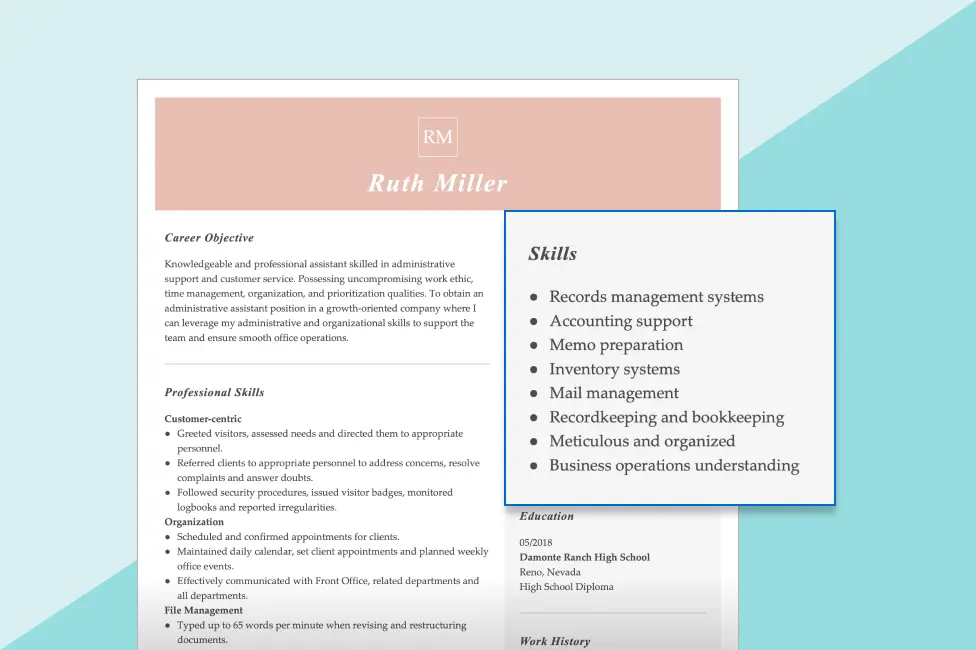Gender and the Labor Market: 2025 Global Report
Talent, intelligence, and ambition have no gender. But paychecks still do.
Are we truly marching forward to equality? Not necessarily.
In a world striving for equality, behind the impressive facade of progress and corporate diversity statements, there’s an ugly truth to expose.
At LiveCareer, we examined the situation of female and male employees in 20 countries. To create our report, we used data from the ILO (International Labour Organization), OECD (Organization for Economic Co-operation and Development, and LP&R (International Network on Leave Policies & Research). We focused on:
- Gender pay gap – the difference between the median earnings of men and women
- Gender employment gap – the difference between the percentage of working men and working women
- Share of women in managerial positions
- Share of female and male employees in the private and the public sector
- Parental leave length – maternity leave versus paternity leave
Is gender equality in the workplace real? And does the situation look equally bad in different parts of the world? Let’s find out.
First, some recent gender pay gap statistics.
- The Institute for Women’s Policy Research projects that gender pay equity won’t become a reality until 2059
- According to the 2023 WEF Global Gender Gap Index, no country has yet achieved full gender parity. Iceland, Norway, Finland, New Zealand, Sweden, Germany, Nicaragua, Namibia, and Lithuania are the top 9 countries that have closed at least 80% of their gap.
- According to a 2022 Pew Research Center analysis, American women earned an average of 82% of what men earned. Pay disparity is even greater for women of color, with African American women earning just 60 cents and Latinas earning only 55 cents for every dollar earned by white, non-Hispanic men.
- McKinsey’s 2022 Women in the Workplace report revealed that for every 100 men promoted from entry-level to manager, only 87 women are promoted, and only 82 women of color are promoted.
- Only 8.8% of Fortune 500 CEOs are women.
- It will take 131 years for the world to close the gender gap, 2023 WEF Global Gender Gap Report shows.
And here’s what our 2023 global report on gender at work revealed.
1. Argentina
- Gender pay gap: 25.37%
- Gender employment gap: 18.57%
- Share of female managers: 32.7%
- Share of women and men in the private sector: women – 40.26% | men – 59.74%
- Share of women and men in the public sector: women – 55.18% | men – 44.82%
- Paid parental leave: maternity leave – 90 to 100 days | paternity leave – 2 – 4 days
2. Australia
- Gender pay gap: 27.71%
- Gender employment gap: 6.91%
- Share of female managers: 40.0%
- Share of women and men in the private sector: women – 44.26% | men – 55.74%
- Share of women and men in the public sector: women – 62.13% | men – 37.87%
- Paid parental leave: maternity leave – 12 weeks | paternity leave – 2 weeks
3. Brazil
- Gender pay gap: 17.25%
- Gender employment gap: 20.11%
- Share of female managers: 39.3%
- Share of women and men in the private sector: women – 40.86% | men – 59.14%
- Share of women and men in the public sector: women – 56.98% | men – 43.02%
- Paid parental leave: maternity leave – 4 or 6 months | paternity leave – 1 – 4 weeks
4. Canada
- Gender pay gap: 25.96%
- Gender employment gap: 5.6%
- Share of female managers: 35.6%
- Share of women and men in the private sector: women – 43.46% | men – 56.54%
- Share of women and men in the public sector: women – 63.07% | men – 36.93%
- Paid parental leave: maternity leave – 16 weeks | paternity leave – 0
5. China
- Gender pay gap: 9.22%
- Gender employment gap: NI
- Share of female managers: NI
- Share of women and men in the private sector: NI
- Share of women and men in the public sector: NI
- Paid parental leave: maternity leave – 98 days | paternity leave – up to 30 days
6. France
- Gender pay gap: 20.95%
- Gender employment gap: 5.22%
- Share of female managers: 39.9%
- Share of women and men in the private sector: women – 45.22% | men – 54.78%
- Share of women and men in the public sector: women – 63.78% | men – 36.22%
- Paid parental leave: maternity leave – 16 weeks | paternity leave – 5 weeks
7. Germany
- Gender pay gap: 33.03%
- Gender employment gap: 7.43%
- Share of female managers: 28.9%
- Share of women and men in the private sector: NI
- Share of women and men in the public sector: women – 55.46% | men – 44.54%
- Paid parental leave: maternity leave – 14 weeks | paternity leave – 0
8. India
- Gender pay gap: 30.51%
- Gender employment gap: 46.06%
- Share of female managers: 16.6%
- Share of women and men in the private sector: NI
- Share of women and men in the public sector: NI
- Paid parental leave: maternity leave – 26 weeks | paternity leave – 15 days
9. Indonesia
- Gender pay gap: 21.63%
- Gender employment gap: 27.43%
- Share of female managers: 31.7%
- Share of women and men in the private sector: women – 38.43% | men – 61.57%
- Share of women and men in the public sector: women – 47.01% | men – 52.99%
- Paid parental leave: maternity leave – 3 months | paternity leave – 2 days
10. Italy
- Gender pay gap: 22.75%
- Gender employment gap: 18.1%
- Share of female managers: 27.9%
- Share of women and men in the private sector: NI
- Share of women and men in the public sector: NI
- Paid parental leave: maternity leave – 21.7 weeks | paternity leave – 2 weeks
11. Japan
- Gender pay gap: 22.11%
- Gender employment gap: 11.8%
- Share of female managers: 12.9%
- Share of women and men in the private sector: women – 44.42% | men – 55.58%
- Share of women and men in the public sector: women – 45.14% | men – 54.86%
- Paid parental leave: maternity leave – 14 weeks | paternity leave – 0
12. Mexico
- Gender pay gap: 14.26%
- Gender employment gap: 30.65%
- Share of female managers: 39.2%
- Share of women and men in the private sector: women – 38.04% | men – 61.96%
- Share of women and men in the public sector: women – 46.41% | men – 53.59%
- Paid parental leave: maternity leave – 12 weeks | paternity leave – 1 week
13. Republic of Korea
- Gender pay gap: 33.79%
- Gender employment gap: 16.59%
- Share of female managers: 14.6%
- Share of women and men in the private sector: NI
- Share of women and men in the public sector: NI
- Paid parental leave: maternity leave – 3 months | paternity leave – 10 days
14. Russia
- Gender pay gap: 27.53%
- Gender employment gap: 9.27%
- Share of female managers: 44.0%
- Share of women and men in the private sector: NI
- Share of women and men in the public sector: NI
- Paid parental leave: maternity leave – 10 weeks | paternity leave – 5 days
15. Saudi Arabia
- Gender pay gap: 8.80%
- Gender employment gap: 48.6%
- Share of female managers: 19.5%
- Share of women and men in the private sector: NI
- Share of women and men in the public sector: NI
- Paid parental leave: maternity leave – 70 days | paternity leave – 3 days
16. South Africa
- Gender pay gap: 13.35%
- Gender employment gap: 9.82%
- Share of female managers: 32.9%
- Share of women and men in the private sector: women – 42.36% | men – 57.64%
- Share of women and men in the public sector: women – 58.69% | men – 41.31%
- Paid parental leave: maternity leave – 4 months | paternity leave – 10 days
17. Sweden
- Gender pay gap: 9.91%
- Gender employment gap: 4.75%
- Share of female managers: 41.7%
- Share of women and men in the private sector: women – 37.37% | men – 62.63%
- Share of women and men in the public sector: women – 70.99% | men – 29.01%
- Paid parental leave: maternity leave – 12.9 weeks | paternity leave – 1.4 weeks
18. Türkiye
- Gender pay gap: 9.56%
- Gender employment gap: 35.49%
- Share of female managers: 18.2%
- Share of women and men in the private sector: women – 31.56% | men – 68.44%
- Share of women and men in the public sector: women – 36.53% | men – 63.47%
- Paid parental leave: maternity leave – 16 weeks | paternity leave – 1 week
19. United Kingdom
- Gender pay gap: 14.0%\
- Gender employment gap: 6.75%
- Share of female managers: 36.8%
- Share of women and men in the private sector: women – 42.37% | men – 57.63%
- Share of women and men in the public sector: women – 65.64% | men – 34.36%
- Paid parental leave: maternity leave – 39 weeks | paternity leave – 2 weeks
20. United States of America
- Gender pay gap: 20.41%
- Gender employment gap: 9.67%
- Share of female managers: 41.0%
- Share of women and men in the private sector: NI
- Share of women and men in the public sector: NI
- Paid parental leave: maternity leave – 0 | paternity leave – 0
Injustice continues to haunt workplaces worldwide. And though things are getting better year by year, full gender equality in the workplace is still a long way off.
Christy Birmingham-Reyes, Women Empowerment Blogger at When Women Inspire, believes that the main reasons for the current state of affairs are gender stereotypes and the global harm they do.
“Gender stereotypes continue to impede progress in reducing the gender wage gap that exists in many industries in North America and elsewhere in the world. That negatively affects how women feel about themselves and their place inside and outside of the workforce, potentially lowering self-esteem, limiting hopes for the future, and affecting overall wellness. The results are detrimental to the woman, her family, her community, and the larger society.”
In today’s labor market, bridging the gender pay gap should be the top priority for every forward-thinking business willing to create an inclusive work environment.
Kate Zimmer, Executive Recruiting Manager with Discover Financial Services, views pay transparency as the best way to close the gender gap.
“As a talent acquisition professional, I am responsible for being a talent market expert, including understanding complex pay structures and successfully navigating compensation conversations.
Before pay transparency, I often addressed salary preferences upfront in the recruiting process, as I felt it provided job-seekers with a positive candidate experience.
I am pleased to see pay transparency gain momentum and legislative support in the US. Companies across various industries are beginning to include salary ranges in job postings which lead to pay philosophy practices, establishing trust with current and future workforce, and reducing pay gaps. All of these factors and more directly impact a company’s strategy to attract, hire and retain top talent.”
In 2014, Chimamanda Ngozi Adichie, an award-winning author, gave a speech, “We should all be feminists.” Her powerful words started a worldwide conversation about modern feminism. For Adichie, feminism manifested in full gender equality in different areas of life is a gate to a fair world of happier men and women.
“Some people ask: “Why the word feminist? Why not just say you are a believer in human rights, or something like that?” Because that would be dishonest. Feminism is, of course, part of human rights in general—but to choose to use the vague expression human rights is to deny the specific and particular problem of gender. It would be a way of pretending that it was not women who have, for centuries, been excluded. It would be a way of denying that the problem of gender targets women. That the problem was not about being human, but specifically about being a female human. For centuries, the world divided human beings into two groups and then proceeded to exclude and oppress one group. My own definition is a feminist is a man or a woman who says, yes, there’s a problem with gender as it is today and we must fix it, we must do better. All of us, women and men, must do better.”
The more open, diverse, and inclusive the labor market, the stronger the society and its workforce.
The glass ceiling must be broken. Let the sky be the limit. Not gender.
Sources
- ⋅ Adichie, Ch. N., “We Should All Be Feminists”
- ⋅ American Association of University Women
- ⋅ Haan, K., “Gender Pay Gap Statistics In 2023”
- ⋅ McKinsey & Company, “Women in the Workplace 2022”
- ⋅ National Women’s Law Center
- ⋅ Pew Research Center, “Gender Pay Gap in U.S. Hasn’t Changed Much in Two Decades”
- ⋅ The International Labour Organization
- ⋅ The International Network on Leave Policies & Research
- ⋅ The Organization for Economic Co-operation and Development
- ⋅ U.S. Census Bureau, “Income in the United States: 2021”
- ⋅ Women Business Collaborative
- ⋅ World Economic Forum, “Global Gender Gap Report 2023”
Fair use statement
Want to share the findings of our research? Go ahead. Feel free to use our images and information wherever you wish. Just link back to this page, please—it will let other readers get deeper into the topic. Additionally, remember to use this content exclusively for non-commercial purposes.
About us
LiveCareer offers the best online resume builder on the market, plus expert advice on enhancing your resume. Learn about the best resume formats. Discover how to make a cover letter, and get tips tailored to every career.










